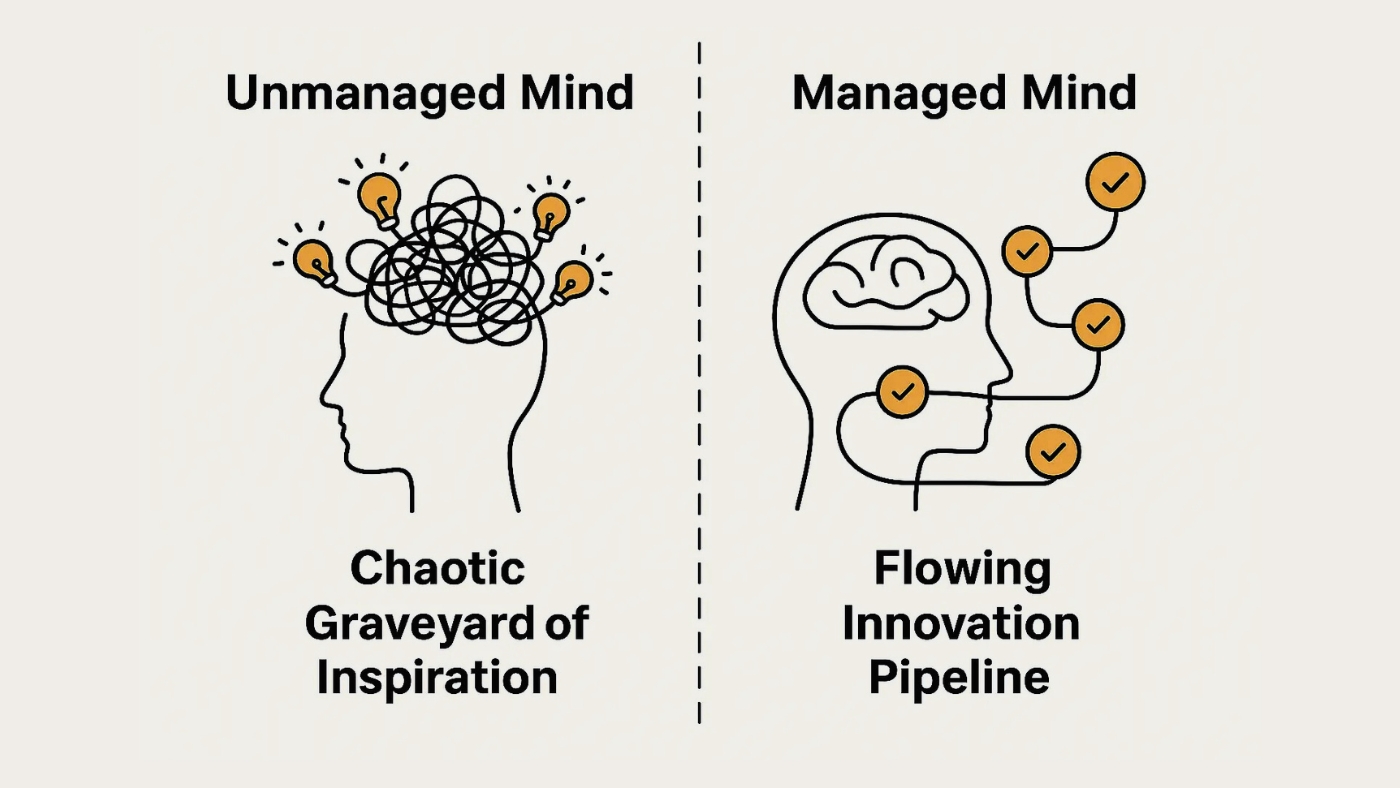
Inspiration is one of the most fleeting gifts we receive as human beings. It arrives unannounced, in the quiet of dawn, in a conversation with a friend, in the middle of a workout, during a walk under the stars, or under the shower in bathroom. Humans have this unique ability of talking to self, consciously or subconsciously while simultaneously engaged in other activities. It is during this parallel process that ideas, like a Tetris cube, flies from somewhere and fits into that exact space. It energizes us, showing us a glimpse of what could be. Yet, for all its power, inspiration is fragile. If it is not acted upon swiftly, it evaporates, leaving behind little more than a faint memory. Scientific studies have shown that an average 6200 thoughts come into human mind daily, though, some studies peg this number much higher. The majority of these ideas are forgotten, fade, abandoned, dismissed, or remain dormant. The very small percentage (less than 1%) that survives action and persistence are the ones that shape careers, culture, and history. All others pile up in the mental archive of sparks, plans, and flashes of brilliance that were never given form. These pile ups are a kind of invisible cemetery of ideas and we call it the Graveyard of Inspiration. This graveyard is the silent tragedy of unrealized potential, the ideas that sparked a fire in someone’s mind but were postponed, doubted, or shelved until they withered away.
Why do so many inspirations die?

6200 ideas in a day means an idea every few second. That’s makes the mantle space fairly active. This “mental mantle” is like a busy idea marketplace, constantly buzzing with possibilities and if not managed well, can become chaotic. After the spark in the head there are many stages that idea pass through. And at every stage there is a potential of the idea not getting through to the next stage. For example, after the spark, the idea may not be captured so it gets dropped due to the cognitive limit. Or it may get dropped at the evaluation stage due to lack of urgency, fear or self-doubt. And often, it is not because they lacked potential but because of other reasons like we lacked urgency etc. We wait for the “perfect” moment, the right resources, or a sense of complete readiness that never truly arrives. Fear plays its role too, fear of failure, fear of ridicule, fear of imperfection. Yet history shows that the world is shaped not by perfect ideas but by imperfect actions (Plato). How many solutions to problems remain undiscovered because someone didn’t dare to act? How many lives remain uninspired because a story was left untold? How many ventures never began because someone hesitated at the starting line? There are seven broad reasons for which ideas may find its way to the graveyard.
How do successful entrepreneurs address this problem

The difference between most people and successful entrepreneurs is not the number of ideas they have. It is in how they deal with this chaos of inspiration. While many get lost in it, entrepreneurs build pathways that allow them to turn sparks of thoughts into real-world outcomes.
They have a structured plan to capture ideas, a daring speed to reject them if ideas don’t fit the scheme of things. They have a super bias to take massive action for execution without waiting for the ‘perfect moment’, they rather create one. Successful entrepreneurs weave these steps into their daily habits. They also have the unique ability to reframe fears and failures into data. Where most people see resources including money as dead end, this tribe looks at an opportunity to become resourceful without getting distracted with other shiny objects / ideas.
In the end, successful entrepreneurs don’t avoid the graveyard of inspiration, they face the same pitfalls as everyone else. The difference is that they build disciplines of capture, prioritization, action, and focus that allow them to guide their best ideas through the maze of self-doubt, overload, and resource limits and build bridges out of the graveyard, transforming fleeting sparks of inspiration into businesses, movements, and legacies.





